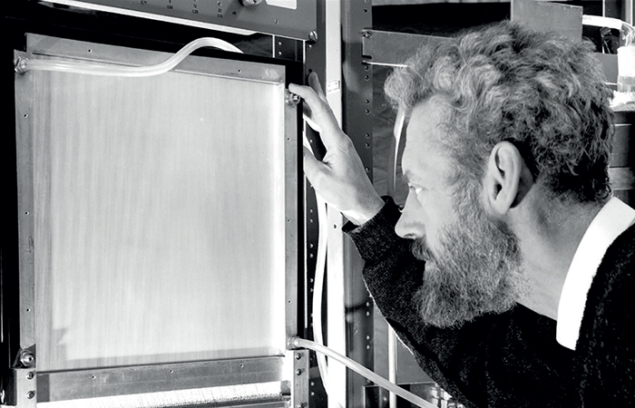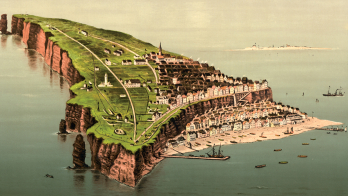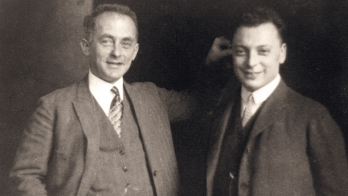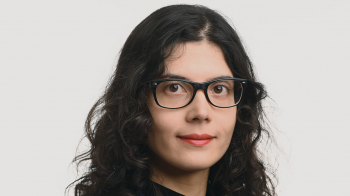Recollections of CERN’s early days from the CERN Archives.
CERN appeared a gigantic enterprise to the young people who started to work for the fledgling organization from 1952 onwards, even before its official foundation in 1954. The adventure is traced here via some recollections recorded in interviews carried out by Marilena Streit-Bianchi for the CERN Archives between 1993 and 1997. These edited extracts cover some of the different evolving facets of the organization from the early 1950s to the late 1970s, and pay tribute to some of those who have passed away before the 60th anniversary of the young CERN they describe so vividly. Their enthusiasm and competences brought the organization to the level of excellence that has now become familiar.
A first recruit and the first machine

Image credit: CERN-GE-6303023.
I was working at Philips Hilversum where I met Professor Bakker, and I became an assistant at the Zeeman Laboratory in Amsterdam. In 1951 I was asked to join his team, which was working on building CERN. I attended the Copenhagen meeting in 1952, when the alternate gradient principles became known – I believe that it was at this very moment that CERN was born. Although many of us, including myself, did not completely understand it, we immediately believed that an interesting new machine could be built, going from weak focusing to strong focusing. UNESCO provided money for our salaries. It was not much that we earned, but it was a terrific experience to arrive at a place where French and English had to be spoken.
Building the Synchrocyclotron (SC)
The alternating gradient machine was in development, and in the meantime it was decided to build a weak-focusing 600 MeV proton synchrocyclotron. I was asked to look after its set-up. We were a nice small team of 12 people sitting in barracks near the airport, whereas the [Proton Synchrotron] PS team, much larger, was staying at the University of Geneva. The construction of the site started, and it took 3–4 years. The six of us that really built the SC machine were working in a free atmosphere. It could look wild from the outside, but among us [there] was a strong discipline based on trust. We developed the RF system and conceived the tuning fork called the vibrating capacitor, made out of parts of very soft aluminium alloy. I made the design…and it was published in Nuclear Instruments and Methods. It worked well. The high-frequency system did not take too much time, whereas the magnet being 3000 tonnes of steel 5 m [in] diameter was not simple. After the war, all of the big countries wanted to contribute to it [France, Germany, Italy, England]. Each of them had some capability but didn’t have them all, so there was a choice to be made, and it was decided to make it based on technical and not on political grounds.
• Frank Krienen 1917–2008.
Frank Krienen was one of the first recruits for CERN’s 600 MeV Synchrocyclotron, in 1952. In the 1960s, he turned to developing particle detectors, in particular wire spark chambers using different types of read-out. Later, he worked on the construction and operation of the electric quadrupoles for the muon storage ring, for the third and last g-2 experiment at CERN in the years 1969–1977, followed by the design and development of the electron-cooling apparatus for CERN’s Initial Cooling Experiment ring.
Accelerating expertise

Image credit: CERN-AC-7101182.
I went to Imperial College where Professor Dennis Gabor was, because I wanted to study beyond what university had given me. He had excellent courses in advanced particle dynamics, statistical physics, etc. It was an extremely important year for me, although [his] lectures were not on accelerators. The work I did for myself was on accelerators, and more specifically on linear accelerators, and the reason is simple. In Norway…a small country with few accelerators…the idea came up that perhaps it was possible to make accelerators in…the low-energy field. But in my stay with Gabor it was more the general knowledge I gained that was very much useful later in life.
The Proton Synchrotron (PS) Group
I was involved already a bit with Odd Dahl in 1951, then I became part of CERN full time from summer 1952. At that time, Dahl was leading the PS Group, as it was called in those days, from Bergen, [where] a group was working on the study of possible accelerators for what was called CERN. We were sitting in the home institute. It was an interesting experience – we had to communicate by letters and by travelling. There was no computer connection like now. I have never written so much in my life as I did in the first two years, or travelled for meetings as I did during 1952. I must admit that a very good spirit was struck…we were a good group, elected in a very specific way. Senior people like Dahl, [Wolfgang] Gentner, [John] Cockcroft, [Edoardo] Amaldi, etc, selected very good young people among their collaborators and students. We were enthusiastic, and we had the fortunate happening that the [alternating] gradient principle was invented at the beginning of the study. I have ever since admired Dahl for having the courage to switch the whole activity onto this new principle, only weeks after it was, shall we say, invented. It was a tremendous challenge to study if the energy could go to 30 GeV, instead of the 10 GeV we were talking of before.
The Intersecting Storage Rings (ISR)
I never thought of becoming the project head. I thought my ability beautifully fit the study-preparation phase, and then what I would have considered a more practical person could take over and lead the project. I hoped that he would ask me as deputy. So it was a surprise when I was asked to become the head of the ISR project.
A difficult thing to achieve technologically for the machine was to have an RF system that could do the job. The next most difficult big problem was the vacuum system, because we realized that it was tremendously important for the lifetime of the beam, an essential element for having efficient operation. The vacuum was improved continuously, far beyond what we first thought was necessary. There were many aspects related to vacuum that had to be solved. Indeed, to achieve the vacuum that we needed, most improvements were done after we put the machine into operation. I think for 10 years the vacuum was gradually improved, and improved and improved.
• Kjell Johnsen 1921–2007.
Kjell Johnsen joined CERN in 1952, and became a world-leading accelerator expert through his work on the design of the PS. He went on to lead the ISR project, CERN’s first hadron collider and forerunner of the LHC.







